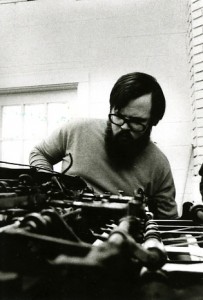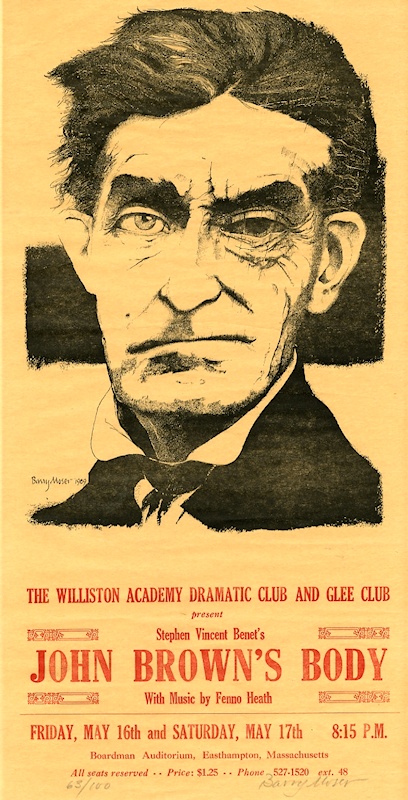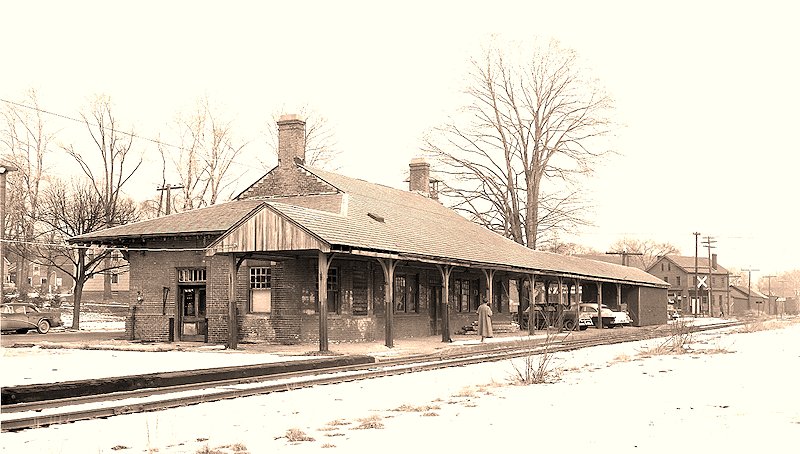
Some of this is necessarily in the nature of a personal reminiscence. Barry Moser spoke at Williston Northampton’s Commencement on May 25th. (Listen here!) Today he is recognized as an artist of international preeminence; in September 1967, for this writer and about 400 other once-young men, he was a rookie faculty member taking over a visual arts program that was, quite frankly, on life support. Its transformation was swift and spectacular. And those of us fortunate to have been in Barry’s classes were transformed as well. Ever the iconoclast, he challenged every assumption any of us might have had about art, not to mention literature, music, psychology . . . all the while demanding that we see, not just look. Any student from his 15 years on the faculty will tell you that his were lessons for a lifetime.
In the late sixties the Williston Theatre was entering one of its golden ages under the direction of Ellis Baker and Richard Gregory. Barry was soon involved as a set designer. He also began to produce handbills for the plays — visual miracles for which the word “poster” is possibly inadequate. Often the central images were executed in the intricate and sometimes unforgiving media of woodcut or etching. Here are a few examples. (All items are by Barry Moser for Williston Academy or The Williston Northampton School; reproduced with the gracious permission of the artist.)
John Brown’s Body, Spring 1969. “I tried for something that looked like a wanted poster.” (Click all images to enlarge.) Continue reading
Continue reading


